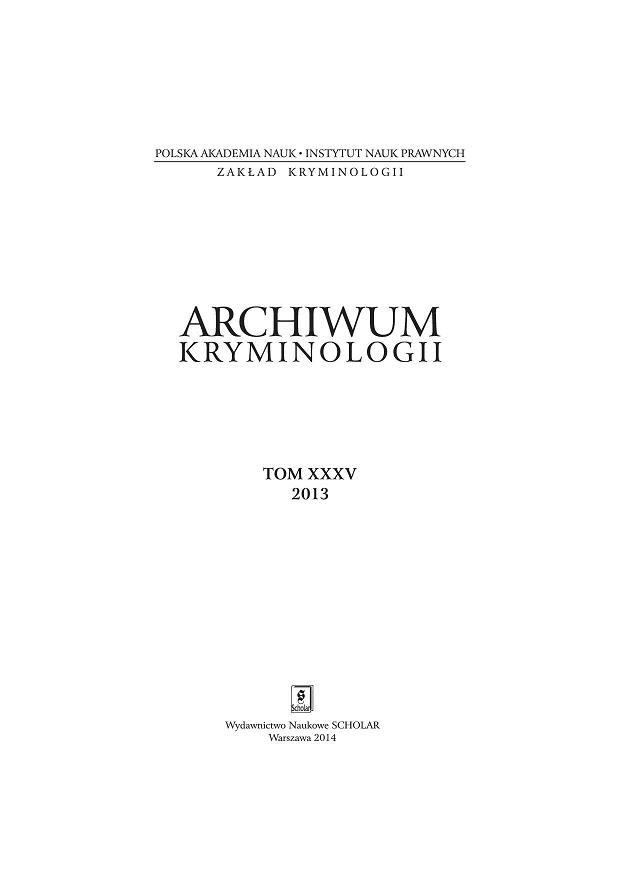Jak badać lęk przed przestępczością?
How to research the fear of crime?
Author(s): Paweł OstaszewskiSubject(s): Law, Constitution, Jurisprudence
Published by: Instytut Nauk Prawnych PAN
Keywords: FEAR OF CRIME; CRIMINOLOGY;
Summary/Abstract: Fear of crime has been researched since late 1960s and is commonly recognized one of the most frequent issue investigated in contemporary criminology. Definition of the fear of crime, its operability by means of particular investigation methods and techniques, and its macro-, meso-, and micro-social conditioning factors are widely discussed in the scientific literature on the subject. This article describes methodological aspects of research on this issue and particular questionnaire questions formulated in such research. The most frequent method used in research on fear of crime is to use particular questionnaire questions asked to respondents on quantitative surveys. There are attempts to use other research methods and techniques such as in-depth and focus interviews or content analysis. Among qualitative research, there are two predominant methods of fear measurement and, what follows, its definition and analysis. The first assumes a single question (e.g. how safe one feels on a lonely evening walk) with closed categories of responses. Choosing a category by the respondent is deemed to be an indicator of fear. The second method assumes that fear of crime is a continuous quantitative variable created by a scale which sums up responses to a series of questions on particular aspects of fear (e.g. fear of various types of crimes). The results obtained by the first method are presented as a percentage of respondents afraid of becoming a victim of crime which percentage is to reflect fear of crime level in a society. A relationship with other variables within to-dimensional analyses (e.g. using cross-tables) and multidimensional (e.g. with the use of logistic regression) are also investigated. Presenting one-dimensional results from the second method of measurement is much less understandable since it relies on an abstract arithmetic mean which is impossible to interpret. At the same time, however, they enable to define the level of fear (and not only the sole fact of its occurrence or lack of occurrence) and to use more precise techniques of two- and multi-dimensional analysis such as comparison of means and linear regression. It is worth to not that precise determination of the number, form and way of asking such questions is subject to constant debate in the literature which has not been decided so far.
Journal: Archiwum Kryminologii
- Issue Year: 2013
- Issue No: XXXV
- Page Range: 5-60
- Page Count: 56
- Language: Polish

